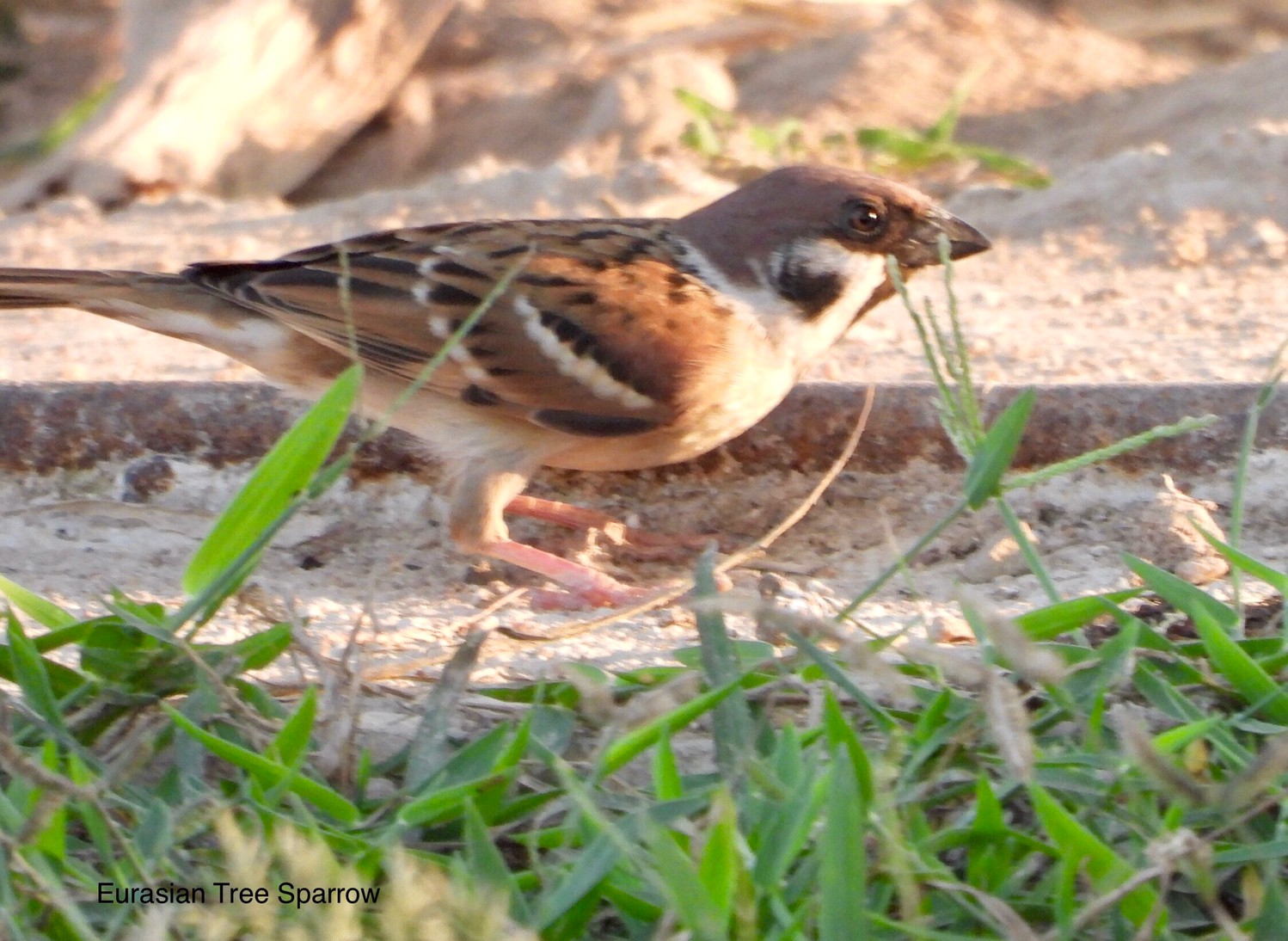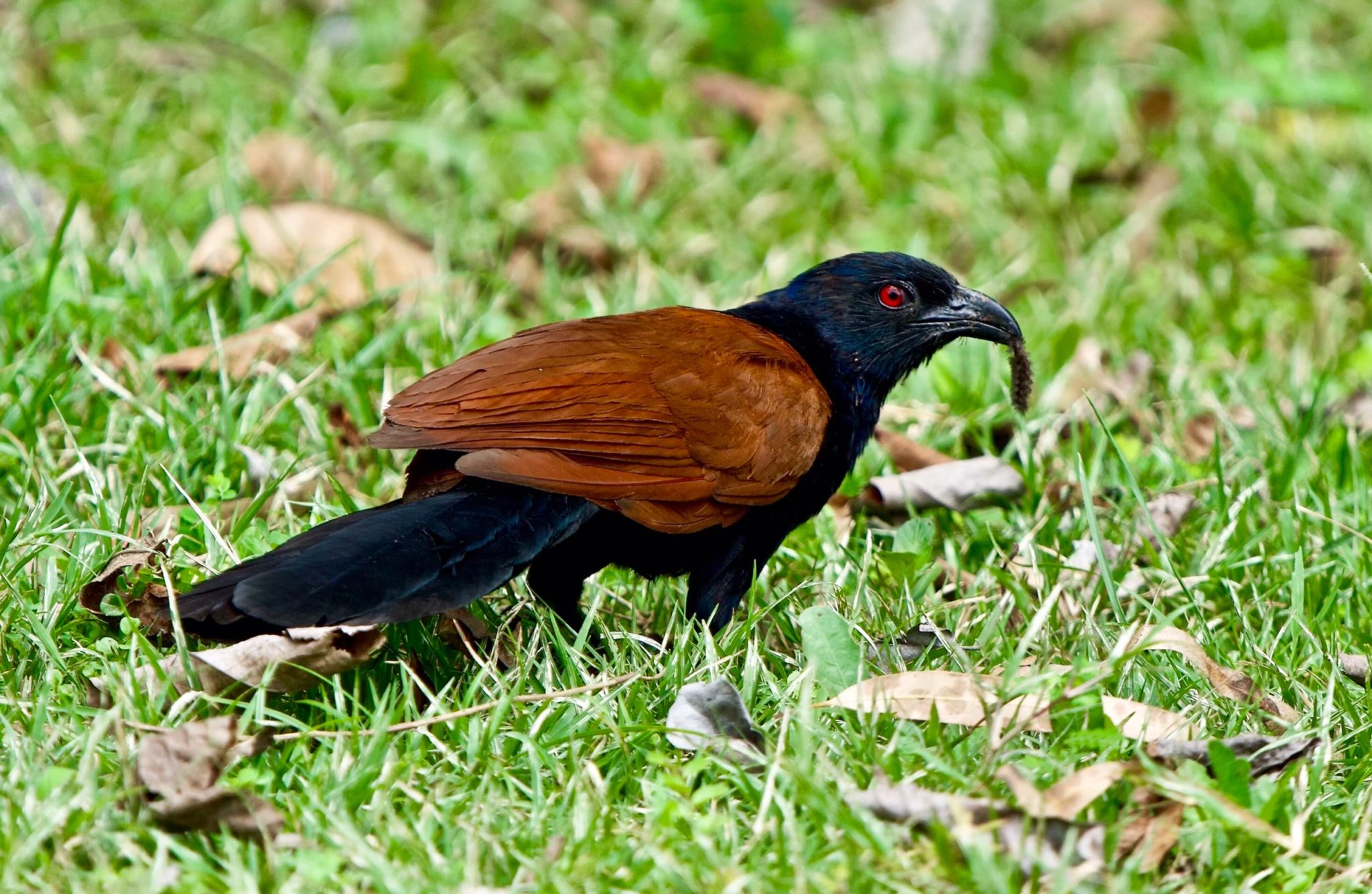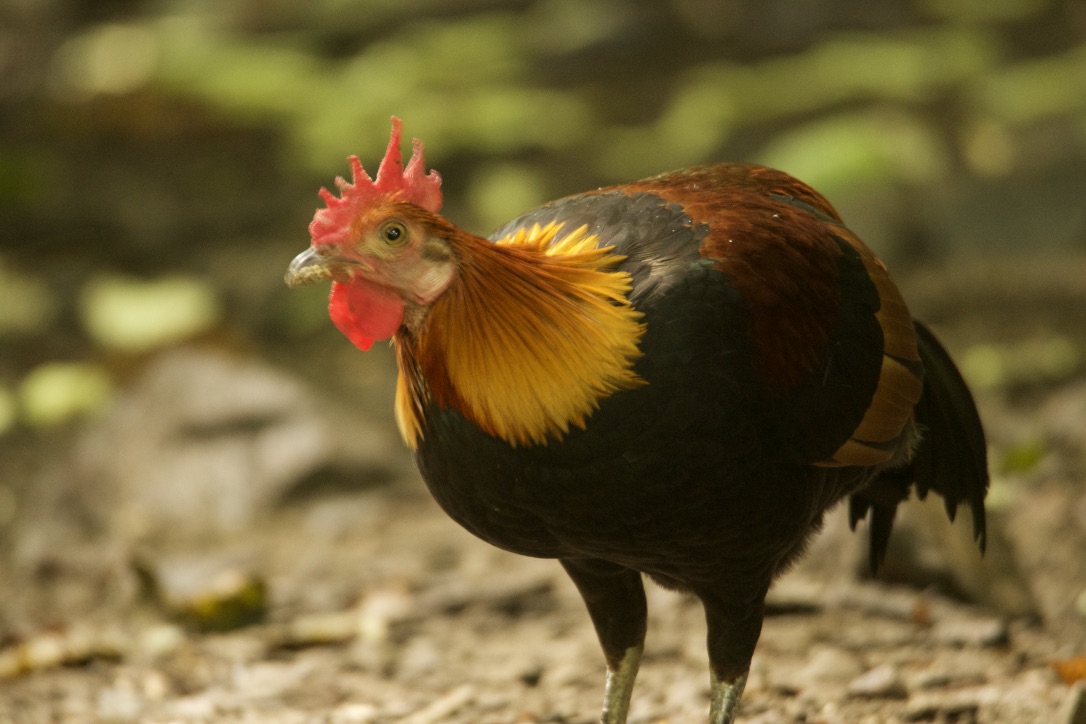Passer montanus
Size: 12 – 14cm
Weight: 17 – 30g
Found: This sparrow breeds over most of temperate Eurasia and Southeast Asia, where it is known as the tree sparrow, and it has been introduced elsewhere including the United States. The Eurasian tree sparrow is rural in Europe, but is an urban bird in eastern Asia; in southern and central Asia, they may be found around towns and villages.
Description: The adult’s crown and nape are rich chestnut, and there is a kidney-shaped black ear patch on each pure white cheek; the chin, throat, and the area between the bill and throat are black. The upperparts are light brown, streaked with black, and the brown wings have two distinct narrow white bars. The legs are pale brown, and the bill is lead-blue in summer, becoming almost black in winter.This sparrow is distinctive even within its genus in that it has no plumage differences between the sexes; the juvenile also resembles the adult, although the colours tend to be duller.
Diet: It eats weed seeds, such as chickweeds and goosefoot, spilled grain, and it may also visit feeding stations, especially for peanuts. It will also feed on invertebrates, especially during the breeding season when the young are fed mainly on animal food; it takes insects, woodlice, millipedes, centipedes, spiders and harvestmen.
Comment: The tree sparrow has a large range estimated as 98.3 million square kilometres (38.0 million sq mi) and a population of 190–310 million individuals. Although the population is declining, the species is not believed to approach the thresholds for the population decline criterion of the IUCN Red List (that is, declining more than 30% in ten years or three generations). For these reasons, the species’ conservation status is evaluated at the global level as being of least concern.





